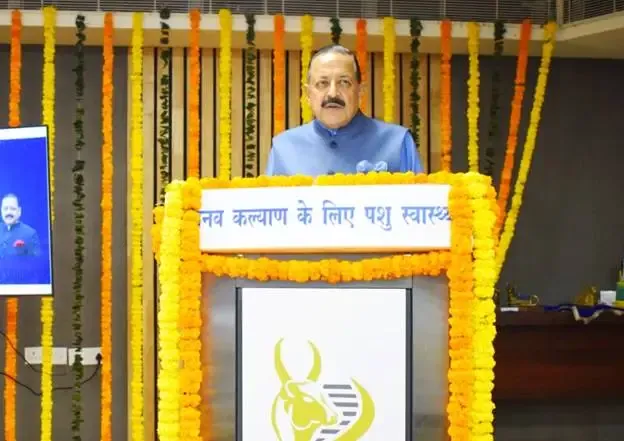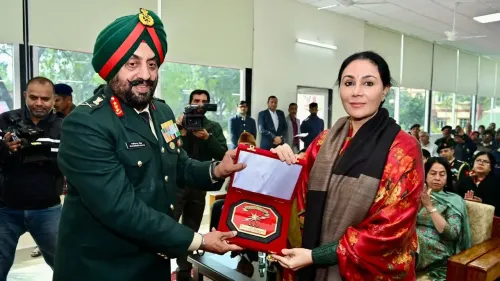Is India’s First Animal Stem Cell Biobank Set to Transform Livestock Medicine?

Synopsis
Key Takeaways
- First animal stem cell biobank in India inaugurated.
- Located at NIAB in Hyderabad.
- Cost of facility: Rs 1.85 crore.
- Equipped with advanced technologies for research.
- Aims to enhance livestock health and agricultural productivity.
New Delhi, Aug 9 (NationPress) On Saturday, India inaugurated its inaugural animal stem cell biobank and laboratory dedicated to the advancement of regenerative medicine and therapies for livestock.
Inaugurated by Union Minister of State (Independent Charge) Science & Technology, Dr. Jitendra Singh, this state-of-the-art facility is located at the National Institute of Animal Biotechnology (NIAB) in Hyderabad.
Spanning an impressive 9,300 sq ft and built at a cost of RS 1.85 crore, the Animal BioBank is equipped with cutting-edge technology.
The laboratory features a stem cell culture unit, 3D bioprinter, bacterial culture lab, cryostorage, autoclave rooms, advanced air handling systems, and an uninterrupted power supply. It aims to propel research in disease modeling, tissue engineering, and reproductive biotechnology.
With backing from the National Biopharma Mission (NBM) of DBT–BIRAC, the facility is set to expand its capabilities to include biobanking of animal stem cells and their derivatives.
“While we had facilities for human stem cells, the same was lacking for animal cells. The pinnacle of NIAB and Indian biotechnology is yet to unfold,” Singh stated, asserting that these advancements will play a vital role in preparing India for the future.
“We will keep pace with the impending industrial revolution driven by biotechnology. Our economy is transitioning from manufacturing to regenerative and genetic processes, and India has embarked on this journey,” he continued.
Additionally, the Minister laid the foundation for a new hostel block and Type-IV quarters at NIAB, approved by the Department of Biotechnology for a total investment of Rs 19.98 crore. This infrastructure will support research scholars, faculty, and staff, fostering a dynamic academic and innovation ecosystem.
Furthermore, Singh launched groundbreaking veterinary diagnostic tools aimed at revolutionizing animal health management and endorsing the ‘One Health’ approach.
These innovations include a field-deployable DIVA-capable diagnostic kit for the early and precise detection of Brucella species; an affordable on-site diagnostic assay for subclinical and clinical mastitis in dairy cattle; a portable antimicrobial sensitivity testing device yielding results in under two hours to promote responsible antibiotic use; a sensitive test for Toxoplasma gondii infection in animals; and an indigenous rapid strip for large-scale surveillance of Japanese Encephalitis in both animals and humans.
“These innovations are set to enhance agriculture-linked GDP, boost livestock productivity, and pave the way for an ‘Evergreen Revolution’ in the animal husbandry sector,” the Minister emphasized.
In terms of agriculture, “these advancements signify a new era of animal-based agricultural productivity -- an ‘Evergreen Revolution’. With agriculture accounting for 18 percent of our GDP and 60 percent of our workforce relying on it, innovations in veterinary health will bring about transformative changes,” he remarked.
“Every rupee invested in agricultural research yields a return of Rs 13, and establishing links with industry partners from the outset ensures these technologies are effectively implemented,” Singh concluded.










